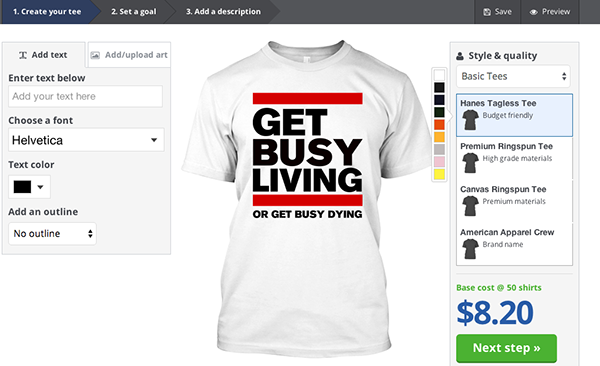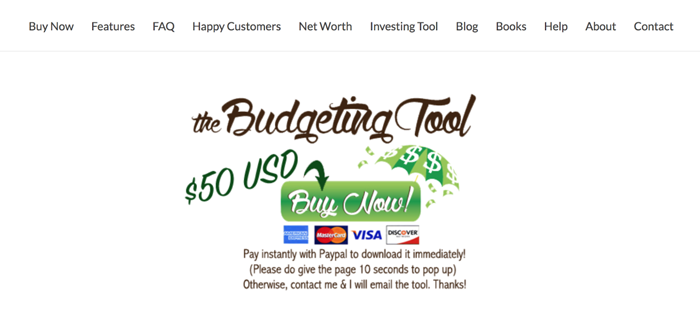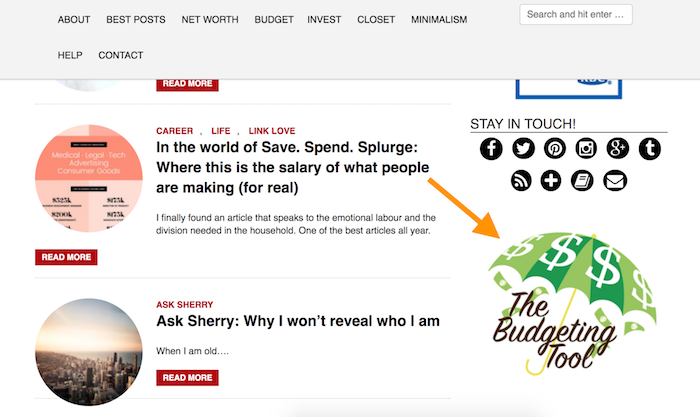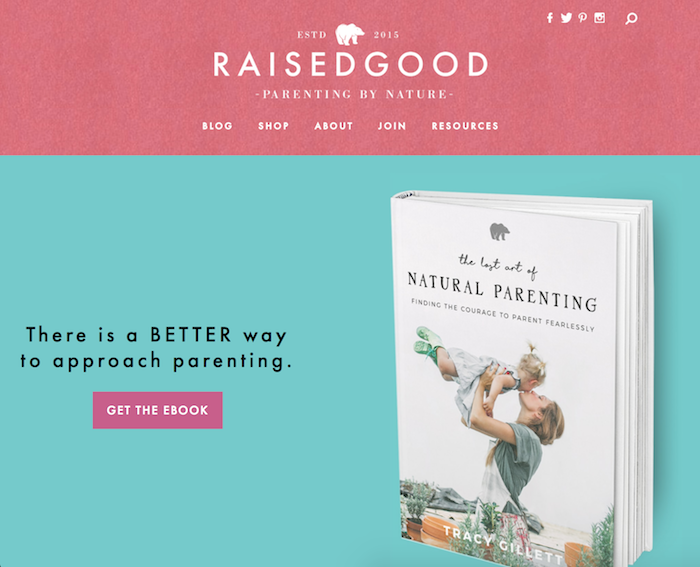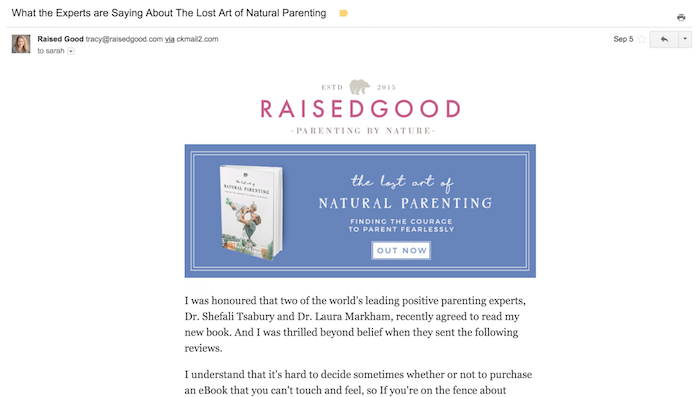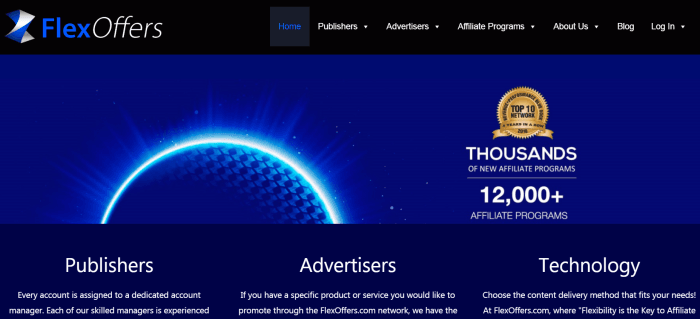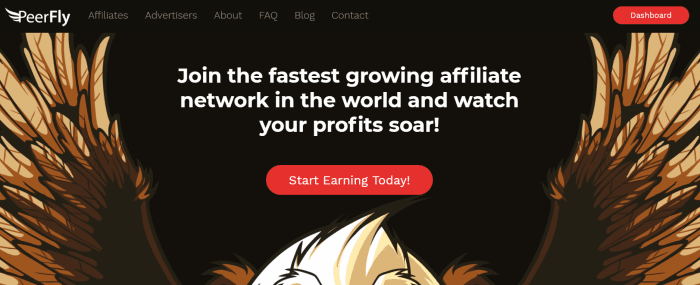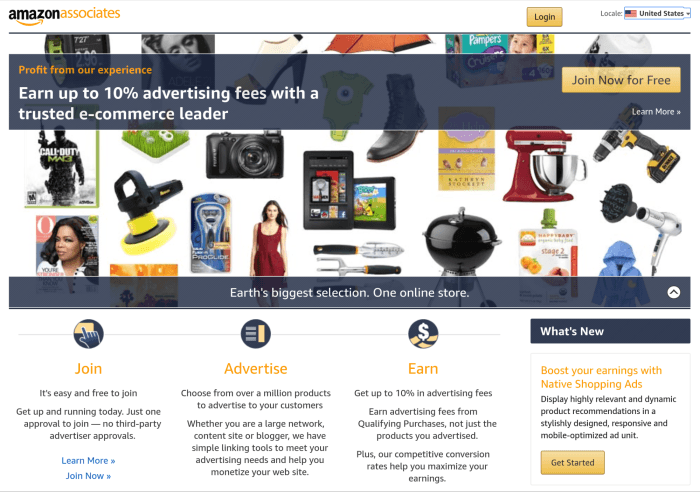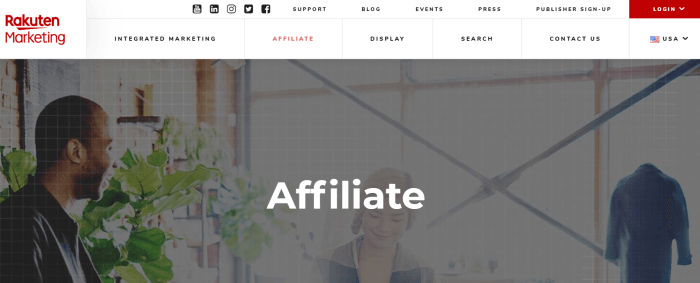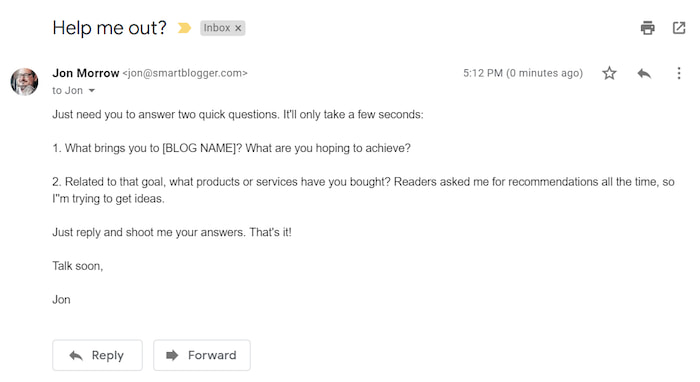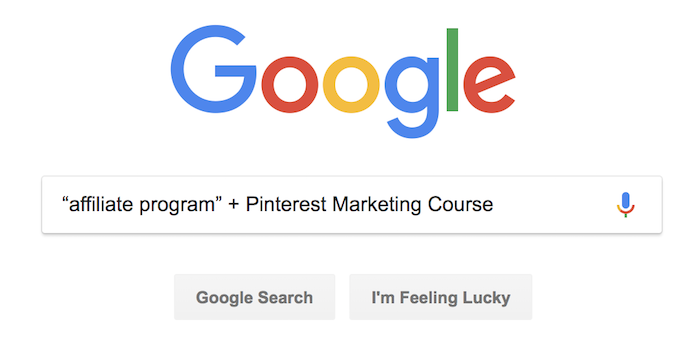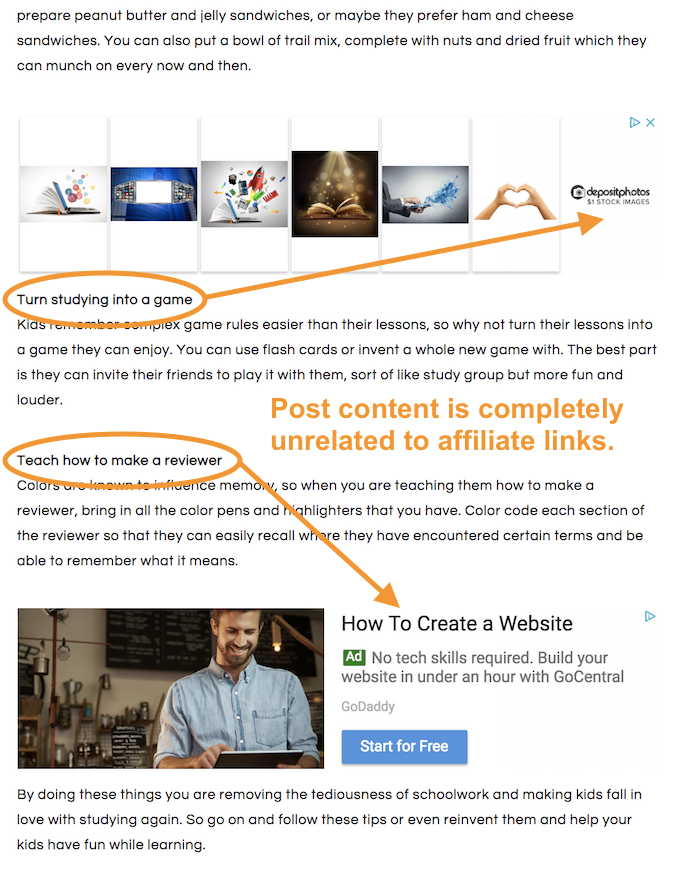Here’s the key point you need to understand if you want to become an affiliate marketer:
You’re earning a commission in exchange for giving readers valuable insights on products or services they were already thinking about purchasing.
In other words, your readers are already buying things. They are already going to make a purchase whether or not you give them any advice.
The question is, could you help them make a smarter decision than they could alone?
Because that’s where you add value. You earn a commission in exchange for helping people make smarter decisions, and you use your blog and the Internet to systemize that process, providing valuable advice to thousands of people.
Here’s a step-by-step process for doing exactly that:
Step 1: Identify What Your Audience is Already Purchasing
The core question you need to ask yourself is:
What types of products and services is your audience already buying?
For example, Smart Blogger readers all need WordPress hosting, WordPress themes, and WordPress plugins to create their site. So, we carefully research all the products in those categories and make recommendations.
So, here’s the question for your audience:
WHAT TYPES OF PRODUCTS OR SERVICES DO THEY BUY?
Initially, you might not know exactly what products to promote, but if you think about it for a bit, you can probably guess the major categories.
For instance, what do moms of toddlers spend a lot of money on?
My guess: child care, cleaning supplies, snacks, gas, toys.
How about aspiring freelance photographers?
Cameras, other photography equipment (lighting, lenses, etc.), photography courses, photo editing software, and so on.
I’m guessing on both, but there’s a good chance my guesses are pretty spot on. When in doubt, you can also email your audience and just ask them.
HOW TO CONDUCT A MINIATURE SURVEY
There are lots of tools out there for conducting surveys, but the simplest one is good old-fashioned email. Assuming you have an email list, just to send out an email like this:
Readers will reply with answers and give you all kinds of interesting insights. Because it’s through email, you can also reply to ask them follow up questions if you like.
And then you just need to…
Step 2: Choose a Product to Promote as an Affiliate
As an ethical blogger, you’ll always be constrained in the products you choose to represent in one of two ways:
- Either you’re limited by your experience to products that you’ve used and liked, that have affiliate programs and that are a good fit for your audience, or
- You’re constrained by the products you can get access to in order to evaluate them, either by buying them outright or getting a free sample or trial.
No matter which approach you take, expect to have to invest time and money into researching the best products for your audience.
Here are your two main options (with your best option listed first).
OPTION #1: PROMOTE PRODUCTS YOU ALREADY KNOW AND LOVE
This is the most common way bloggers get started with affiliate sales.
You become an affiliate for something that you’ve used yourself, had a good experience with, thoroughly tested and feel good recommending. You should be fairly confident that others will get the same results you did (or better), as long as they do the work.
If you’ve found great success from a course, mastermind, or ebook that your readers could also benefit from, it only makes sense for you to spread the word and share your results.
Do an inventory of the products, services and courses you already have experience with. You might have a list of a dozen or more.
Which of these would you be thrilled to promote? Cross out any that don’t fit the bill.
Now simply check to see if the merchant has an affiliate program (some won’t but you’ll probably be surprised at how many do).
Do a Google search for “affiliate program” + [product name], or simply email the merchant and ask.
Then run your remaining options through this Good Affiliate Product checklist:
- You’ve previewed the product so you know its quality (given, in this case).
- They have a solid refund policy that you trust they’ll honor.
- They provide good customer support (and you’ve tested it).
- You have a good story to share about your experience with the product.
- The offer fits your audience’s needs and won’t abuse the trust you’ve built with them.
The products that tick all the checkboxes are your best opportunities for affiliate income. As time goes on, add as many of these products to your mix as you like.
You’ve found your first product! Apply using the merchant’s process and start promoting.
If you’re just dipping your toe in the water of affiliate marketing, this first option may be enough to get you started.
However, most bloggers will want to try the next one, too.
(And you’ll have to explore the second option if you don’t have an existing product you love that is also a great match for your audience and offers an affiliate program.)
OPTION #2: FIND PRODUCTS VIA AN AFFILIATE NETWORK
If you don’t have any direct experience with or knowledge of products in your niche that could help your readers, you can often find good affiliate products on affiliate networks
But be careful — this approach requires that you invest time into research and money into purchasing products to try out, more so than the first option.
That’s because there’s less trust and prior knowledge involved from the outset. You have to do your due diligence to protect your reputation and the credibility you’ve built with your readers.
When you work through a network, you typically won’t know the merchant ahead of time and usually won’t build a relationship with them (your business relationship is with the network).
The list of popular and reliable affiliate networks include ClickBank, CJ Affiliate, and Amazon Associates.
Step 3: Get Yourself Set Up as an Affiliate
Whether you work directly with a merchant or through a network, you’ll have to apply, be approved and provide certain information so that you can be paid.
At a minimum you’ll need to provide:
- Your personal/business contact information for tax and reporting purposes.
- Your bank account where commissions will be sent.
In turn, the merchant must provide you with:
- An affiliate link. Whenever you post about the product, you’ll use this trackable link. It will have a long tag at the end of each link that includes your affiliate ID.
Here’s what some typical affiliate links look like.
EXAMPLE LINK THAT DIRECTS TO THE MERCHANT’S HOME PAGE
https://merchantsite.com/dap/a/?a=1199
EXAMPLE LINK TO ANOTHER PAGE ON THE MERCHANT’S SITE
https://merchantsite.com/dap/a/?a=1199&p=merchantsite.com/page.html
You’ll also usually get some tips and useful assets for marketing the product (often found in a welcome guide or on the affiliate reporting site).
These could include:
- An affiliate guide as well as instructions on how to use the platform and summary of policies such as payment.
- Marketing tools like banners and sidebar graphics.
- Sample email/webpage swipe copy.
- Ongoing communications from the merchant about promotions, new products, etc.
If you use a network like Amazon, you’ll get your own link for each of the specific products you promote.
Be sure to check your specific network’s help or support pages for more information.
Tip: If your audience is global (which many bloggers’ are), you might want to check out geniuslink for tracking overseas sales through Amazon, iTunes and Microsoft Store.
Step 4: Start Promoting Your Chosen Affiliate Products
Ultimately, all your hard work finding and evaluating products only pays off if somebody takes your advice and make the purchase, right?
For that to happen, you need to put your recommendation in front of your audience. Even more importantly, you need to make your recommendation trustworthy.
This is where a lot of affiliate marketers slip up. They think slapping some banners up on their blog that link to affiliate products is all they need to do.
But take a look at this:
Does that look trustworthy to you? Nowhere close, right?
Well, here’s a little secret:
The most successful affiliate promotions look nothing like that.
Here’s what to do instead:
OPTION #1: CREATE A RESOURCE PAGE ON YOUR BLOG
It promotes lots of different products, but it also organizes them according to different types of readers and what they might need at the time. It also explains why those products would be helpful to them.
In other words, it’s not just a sales pitch. It’s educational.
And it’s an easy way to get started.
Chances are, you can put together a resource page like this within a few hours. Your readers will also appreciate you putting all of your recommendations in one place for easy reference.
OPTION #2: CREATE AND PROMOTE CUSTOM CONTENT
Custom content strategies will be the backbone of your affiliate promotional efforts.
Use as many of the following different strategies as make sense for your blog and audience.
Note: All of these strategies assume that you are already sending traffic to the latest content you’re creating by emailing your list on a regular basis (at least two to four times per month) to let them know what’s new.
A) Write Reviews
You can write detailed reviews of products, courses, books or software products you promote as an affiliate.
Your reviews can focus on a single product or compare competing products side-by-side.
The second approach arguably builds more trust, but it also distracts people by giving them a lot of different recommendations
B) Write Definitive Content on a Related Topic
You can write a definitive, comprehensive post on your site to educate your readers and “soft sell” your products.
For instance, you could write an ultimate guide to setting up a WordPress blog and include your affiliate links to your favorite hosting providers.
Whatever the topic, make sure that it’s evergreen content — information that’s likely to be useful and valuable for years to come.
You can create blog posts, videos, infographics or anything similar — but whatever you do, it should not be a sales page.
Finally, your content must be excellent — make sure it’s an authoritative list post, an epic how-to post, an ultimate guide, or some otherwise epic content.
C) Conduct Interviews
You can interview people who’ve had great success using the product so that your audience can hear their stories — think of it as a kind of audio testimonial.
If the merchant is an individual rather than a company, you can also invite them to chat about how their product works and why your readers will find it useful.
D) Create Valuable Bonus Content
Assuming it’s allowed by your affiliate agreement (sometimes it’s not), you can create bonus content, exclusive to your readers, that helps people get even more value from the affiliate product.
People love bonuses! You can create many types of bonuses fairly quickly and easily while still giving your readers excellent value.
By the way, this is a fantastic way to differentiate yourself from other bloggers representing the same products.
Here are some example bonuses you could offer:
- Step-by-step checklists
- Quick-start guides
- Video overviews or demos
- Complementary or discounted services (e.g., coaching calls)
OPTION #3: CRAFT PROMOTIONAL EMAILS FOR YOUR SUBSCRIBERS
Your email list is your biggest asset when it comes to driving traffic to your offers.
Assuming you’re already emailing your list on a regular basis — for example, every Tuesday, every two weeks, etc. — you can also run occasional promotions where you email your readers more frequently.
If your mailing list software allows it, you can segment interested readers onto a separate interest list, so that only people who raise their hands will receive your free informational and promotional emails.
But even if you can’t segment your list, you’ll want to provide lots of valuable content and build anticipation for your product offers.
Here are some quick ideas:
- Promote your offers indirectly by sending emails linking to your free content (blog posts, reviews, etc.).
- Offer occasional special deals exclusive to your readers (discounts, bonuses, etc.).
- Run “social proof” giveaways — ask your readers to share their experience with your process or product in return for a chance to win.
If you’re promoting a low-priced product like an ebook, digital download or hosted service on an ongoing basis, you might do something as simple as using a P.S. or signature link in your regular emails, with occasional emailed links to custom content.
For courses, masterminds, services or higher-earning products, you might do something closer to an official launch once per year with softer launches once per quarter.
And of course, always follow your merchants’ lead. If they run major launches twice a year, for example, you can participate in those and take advantage of the natural momentum these launches often create.
You may have a different promotion plan for each product.
Example Email Sequence
Custom email sequences are especially effective for your core products.
You’ll usually send out a series of five to seven emails spread out over a time frame spanning a week or two.
These can be run in parallel with your normal blog emails or you can “pause” your regular content for the duration of the sequence.
A sample seven-email series might look like this:
- A welcome email (if they’ve joined a new interest list) or a content-rich email talking about the problem the product solves.
- More helpful content (no selling).
- First mention of the product, positioning it in relation to the problem, with a link to a sales page.
- More free content with advice that’s valuable regardless of whether the reader buys the product, also including another link to the product.
- A “bigger sell” to incentivise the reader to buy using scarcity (e.g., “Only 50 places available”) or time urgency (e.g., “This deal ends in 48 hours”). *
- Additional helpful information, testimonials and/or social proof, and a reminder that time is running out.
- An eleventh-hour last call to let readers know that the offer is closing soon.
* Warning: Only use scarcity or urgency tactics if they are genuine and you intend to stick to the limits or deadlines. Telling readers a deal ends for good at midnight, then offering it again the following week, is a surefire way to lose their trust.
The important thing here is to try different approaches for each product, see what your audience responds to best, and don’t give up!
OPTION #4: RUN EXCLUSIVE LIVE EVENTS
Finally, you can run live events to introduce your audience to your products.
Webinars are the most popular way to do this, and you can host them on your own or as a joint venture with the merchant. (Usually, though, merchants will only participate if you can attract a certain number of attendees.)
If there’s already strong interest from your readers in a particular product, you can make it the focus of your webinar, giving attendees one of the following:
- An interactive walk-through showing how you use the product, including tips and tricks you’ve learned along the way.
- A demonstration of specific features of particular interest to your readers.
- A personal case study of the results you achieved using the product.
More typically, the webinar will focus on a particular outcome that the audience wants to achieve and then position the product as a way to achieve those results more easily or quickly.
A common way to separate webinar content from product content is using the webinar to explain what you need to do to achieve a certain goal, and leaving the product to dive into (or facilitate) the how.
Importantly, the webinar should be valuable even to people who don’t end up buying the product.
To give an example, if you were promoting a software product that automates blogger outreach, your webinar could talk about high-level strategies for outreach that attendees could implement manually, then position the product as a time-saver that lets you focus on the relationship-building instead of the initial outreach.
Tip: to get the most from a live event, remember to publish and promote your webinar replays for people who weren’t able to attend first time around.
DON’T FORGET TO TRACK EVERYTHING TO DISCOVER WHAT’S WORKING BEST
Whichever options you choose for promoting your affiliate products, you’ll want to know which are producing the best results.
Pat Flynn recommends Pretty Link for this. You can create clean, easy-to-use-and-remember links plus get analytics so you can see exactly where people are coming from and what strategies are working best for you.
Most importantly of all, be patient. Don’t expect to get any of this right the first time out. Keep building a strong foundation of content and continually test and try new things.
Step 5: Comply with Legal Requirements (and Best Practices)
In the U.S., the Federal Trade Commission (FTC) requires that you let people know you’ll earn a commission.
But even if it isn’t required by law where you’re located, we recommend it. It’s just good business.
Don’t be afraid to be transparent. People will appreciate your honesty and want to support you to repay you for making their lives better.
So wherever you share an affiliate link, whether it’s in blog posts, web pages, or emails, let your readers know that you stand to earn a small commission if they buy through you — and if they choose not to use your link, no worries.
Assure them that you wouldn’t recommend any products if you hadn’t used them yourself or were confident they could help them.
It’s also a good idea to create an Affiliate Disclaimer page on your website.
We’re also clear on how those affiliate links might look within blog posts.
Read more Top 5 best affiliate marketing networks to join
_______________________________________________________________________________
Please contact us for seo service packages at TDHSEO.COM.
TDHSEO Team
Email: tdhseo@gmail.com
Skype: tdhseo
https://www.facebook.com/tdhseo
Thank you!











